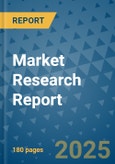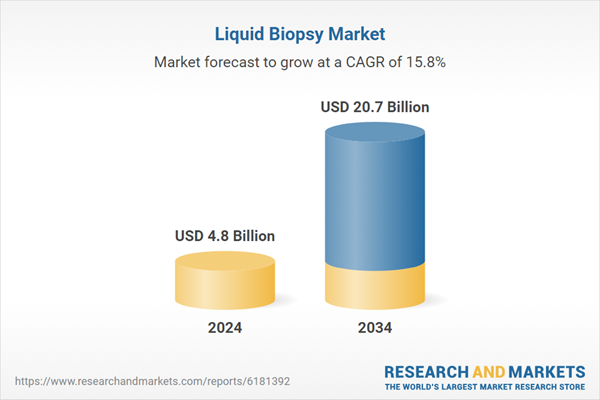The growth is being fueled by rising advancements in cancer diagnostics, a shift toward non-invasive methods, increasing cancer prevalence, and greater awareness around early detection. As healthcare systems globally invest in infrastructure and expand screening access, demand for scalable, accurate tools like liquid biopsy continues to accelerate. The growing focus on early-stage identification and precision medicine is creating fertile ground for the integration of liquid biopsy into clinical settings. The test allows the detection and analysis of tumor-derived biomarkers such as cell-free DNA, circulating tumor cells, and extracellular vesicles directly from bodily fluids, offering a safer and faster alternative to traditional tissue biopsies. With applications spanning cancer diagnosis, mutation tracking, and treatment monitoring, liquid biopsy is proving to be a transformative solution, especially for high-risk and vulnerable patient populations. Its ability to minimize procedural risks while delivering actionable insights supports broader adoption across research institutions, hospitals, and diagnostic labs.
In 2024, the circulating tumor cells segment generated USD 1.9 billion. These cells, which detach from primary tumors and travel through the bloodstream, are valuable in revealing tumor dynamics in real time. Technologies used to isolate and analyze CTCs, ranging from imaging platforms to microfluidics, are enabling clinicians to understand tumor evolution, resistance mechanisms, and genetic profiles. Their non-invasive nature and role in real-time monitoring make CTCs an increasingly important component of the liquid biopsy ecosystem, broadening its clinical relevance.
The cancer application segment held an 85.8% share in 2024. The steadily rising global burden of cancer continues to elevate the demand for faster, less invasive, and highly precise diagnostic methods. Liquid biopsy offers the potential to detect malignancies earlier, tailor therapies more effectively, and monitor responses without requiring surgical interventions. Its growing adoption in oncology is being driven by the need for more personalized, patient-centric treatment strategies that reduce time-to-diagnosis and improve care outcomes.
North America Liquid Biopsy Market generated USD 2 billion in 2024 and is expected to reach USD 8.4 billion by 2034. The region’s leadership stems from its strong biotechnology research ecosystem, significant government investments in oncology, and rising demand for advanced diagnostic options. High adoption rates across clinical and research environments, along with regular product innovation and approvals, are helping solidify the region’s position. Rising awareness among patients and providers, along with robust R&D pipelines supported by public and private funding, is adding momentum to regional growth.
Key players shaping the Global Liquid Biopsy Market include Myriad Genetics, BIOCEPT, Thermo Fisher Scientific, Guardant Health, F. Hoffmann La Roche, Menarini Silicon Biosystems, Lucene Health, Oncimmune, Illumina, EPIGENOMICS, Freenome Holdings, QIAGEN, Bio-Rad Laboratories, MDxHealth, and Angle. Companies in the Liquid Biopsy Market are deploying multi-faceted strategies to build and protect their market positions. A primary focus lies in expanding R&D pipelines for early-stage cancer detection and monitoring solutions. Strategic collaborations with research institutes and hospitals help accelerate clinical validation and widen access to emerging technologies. Many firms are developing AI-driven platforms to improve the accuracy of biomarker detection and streamline interpretation.
Comprehensive Market Analysis and Forecast
- Industry trends, key growth drivers, challenges, future opportunities, and regulatory landscape
- Competitive landscape with Porter’s Five Forces and PESTEL analysis
- Market size, segmentation, and regional forecasts
- In-depth company profiles, business strategies, financial insights, and SWOT analysis
This product will be delivered within 2-4 business days.
Table of Contents
Companies Mentioned
The companies profiled in this Liquid Biopsy market report include:- Angle
- BIOCEPT
- Bio-Rad Laboratories
- EPIGENOMICS
- F. Hoffmann La Roche
- Freenome Holdings
- Guardant Health
- Illumina
- Lucene Health
- MDxHealth
- Menarini Silicon Biosystems
- Myriad Genetics
- Oncimmune
- QIAGEN
- Thermo Fisher Scientific
Table Information
| Report Attribute | Details |
|---|---|
| No. of Pages | 180 |
| Published | October 2025 |
| Forecast Period | 2024 - 2034 |
| Estimated Market Value ( USD | $ 4.8 Billion |
| Forecasted Market Value ( USD | $ 20.7 Billion |
| Compound Annual Growth Rate | 15.8% |
| Regions Covered | Global |
| No. of Companies Mentioned | 16 |









